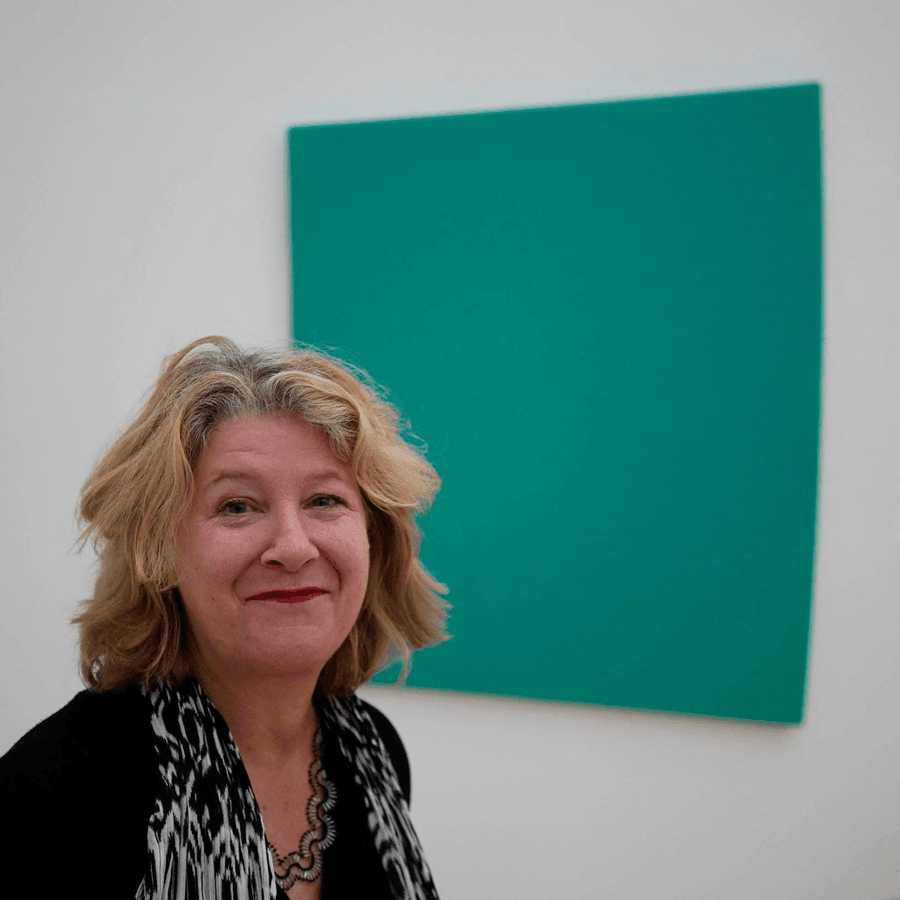Interview Annemarie de Wildt-Contested Statues
- Anna Odink
Annemarie de Wildt writes in her essay Contested Statues: ‘The problem with statues is that they often provide a one-sided, namely exclusively positive, portrayal. We literally put someone on a pedestal.’ De Wildt is concerned with public sculptures in the Netherlands for many years. The Royal Netherlands Academy of Arts and Sciences (KNAW) published the report Unstable Pedestals. Controversial monuments in public spaces. The report recommends to conceptually renew controversial monuments, a suggestion that De Wildt finds promising. “It would be interesting if this recommendation were to be developed further. The least we can do is place a plaque near a sculpture to provide more information. However, the visual power of a sculpture always surpasses such a sign.”
In the Netherlands, several conceptual proposals have already been made to modify controversial statues. One of the first changes was the renaming in 2004 of the Van Heutsz monument to the Indonesia Netherlands Monument. “I don't consider that a good example, to be honest. There have been various proposals to change the monument, even a long time ago by the original artist Frits van Hall, who wanted to replace Van Heutsz's statue with the letters Freedom, Merdeka, or Indonesia. I find Hans van Houwelingen's idea of turning it into a Monument of Shame very interesting."
Van Houwelingen proposed this in 2020. He wants to associate commemoration with insult and shame. This stems from the idea that the Van Heutsz monument is completely misplaced as a symbol of honor and should instead be a monument of shame. [1] According to De Wildt, this is a conceptual idea, and the reversal of perspective on the monument is quite challenging for many people. “It's deeply ingrained in the Dutch mentality to honor someone with monuments.”
J.P. Coen
There are especially many proposals for a conceptual renewal of the J.P. Coen statue in Hoorn. “To paint it green, project things onto it, surround it with other counter-statues, or let it sink into the ground. I find the idea of burying sculptures very interesting," says De Wildt. “This idea has been brought up before. For example, artist Nicholas Galanin did it with the monument of Captain James Cook in Sydney." In 2020, Galanin dug out the shadow of the monument in the grass field. This would make the hole exactly large enough to bury the monument.
“I can imagine that counter-statues don't have to be permanent sculptures but also temporary actions. I find it unfortunate that there is mainly a lot of discussion about the J.P. Coen statue. I hope that conceptual proposals for counter-monuments will be executed someday."
Why do you think that hasn't been done yet?
De Wildt: “Hoorn identifies quite strongly as a city with the whole Golden Age story. Coen is naturally a part of that. The point is that these discussions are not led by artists but mainly by politicians, museum directors, and residents. I think the monument would be best placed in a museum, and I hope that something beautiful will be done with the empty pedestal."
The city of Amsterdam has an official policy that statues will not be removed, and street names not changed. This means that we now live in a public space with sometimes centuries-old statues and names. But according to De Wildt a freestanding statue of J.P. Coen would have disappeared long ago if it had been in Amsterdam. “There are still statues of Coen in Amsterdam, but as parts of buildings. There are small statues of Coen on the façade of the Beurs van Berlage and the City Archives. But I think changing the name of the Coentunnel is more effective than removing these small façade statues, which are also part of a Gesamtkunstwerk."
Another recommendation in the KNAW report is to take more account of the history of monuments. De Wildt also thinks this is a good idea: “We need to look better at the biography of the J.P. Coen sculpture. There were already protests at the end of the 19th century when the sculpture was erected. I would move J.P. Coen to a museum and tell the entire biography there. In a museum, you can provide such context; it's just much more challenging in public space."
Art project instead of iconoclasm
“We have had a few real iconoclasms. But the idea of a storm, the literal destruction or removal of sculptures, has now taken the form of an art project. When the toppling of statues revived during the Black Lives Matter movement, attention was also drawn to statues in the Netherlands. But we just don't have a lot of controversial statues. In the US or Belgium, for example, it's very different. We're also not in the Soviet Union, where all statues of Lenin and Stalin were toppled."
In July 2020, the Amsterdam city council passed motion 839, instructing the mayor and aldermen to make public space more inclusive. De Wildt wrote a step-by-step plan on behalf of the Stadscuratorium Amsterdam for implementing the motion. According to De Wildt, real change in public space in the Netherlands is difficult and a long process. “There are so many committees and parties dealing with this issue. It shouldn't only come from art committees but also from citizens themselves."
Annemarie de Wildt - photo Tristan Roques
About Annemarie de Wildt
Annemarie de Wildt was a curator at the Amsterdam Museum until October 2023. Here, she focused on urban issues and curated exhibitions centered around human stories. De Wildt is a member of the Stadscuratorium Amsterdam and the Advisory Council Naming Public Space (ANOR), which strives for a better reflection of the Amsterdam population in naming public spaces.
The full advisory report Practice what you preach! Public space, art and inclusion can be found on the website of the Stadscuratorium.
You'll also find the essay Betwiste Beelden van Annemarie de Wildt on the website.
[1] Hans van Houwelingen, https://artsoftheworkingclass.org/text/on-the-monument-of-shame
